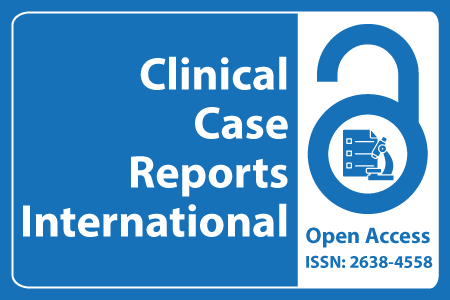
Journal Basic Info
- Impact Factor: 0.285**
- H-Index: 6
- ISSN: 2638-4558
- DOI: 10.25107/2638-4558
Major Scope
- Sleep Medicine and Disorders
- Tuberculosis
- Biochemistry and Biostatistics
- Dentistry and Oral Medicine
- Plastic Surgery
- Chronic Disease
- Renal Disease
- Leukemia
Abstract
Citation: Clin Case Rep Int. 2018;2(1):1084.DOI: 10.25107/2638-4558.1084
Utilization of Sleep Application and Pulse Oximetry in the Short-Term Follow-Up of Mandibular Advancement Device Therapy: A Case Report
Bulent Piskin, Bugra Senel, Alper Uyar, Omer Karakoc and Canturk Tasci
Department of Prosthodontics, University of Kapadokya, Turkey
Department of Oral Radiology, University of Health Sciences, Turkey
Department of Prosthodontics, University of Health Sciences, Turkey
Department of Otolaryngology, University of Health Sciences, Turkey
Department of Chest Diseases, University of Health Sciences, Turkey
*Correspondance to: Bulent Piskin
PDF Full Text Case Report | Open Access
Abstract:
Pulse Oximetry (PO) has been a qualified method to determine cardiorespiratory stability of the subjects for home-based sleep studies. However, not any user friendly methods have been presented yet to score the snoring severity of subjects in home conditions. Sleep applications (apps), which is claimed to score snoring severity of the patients, have been came into use with technological opportunities provided by smart phones. Nevertheless, there are not any reports in the literature about the usage of these apps yet. This report describes the utilization of a sleep app in the short-term follow-up of Mandibular Advancement Device (MAD) therapy applied for a moderate Obstructive Sleep Apnea (OSA) patient with habitual snoring. Initially Epworth Sleepiness Scale (EPSS) of the patient was determined and sleep app recordings were performed simultaneously with PO at three different nights. The mean snore score and Oxygen Desaturation Index (ODI) were calculated. A custom MAD was fabricated and all recordings were repeated at the end of the 6 months usage. The initial EPSS value of the patient was decreased from 16 to 3 with MAD therapy. Moreover, the mean ODI of the patient was reduced by 60% as compared with its initial value. Furthermore, snore scores obtained by the sleep app showed highly compatible alterations both with EPSS and PO values. Using a sleep app in the scoring of snore severity seems like a promising innovation for the future home-based sleep studies.
Keywords:
Snoring; Obstructive sleep apnea; Mandibular advancement device; Sleep application; Pulse oximetry
Cite the Article:
Piskin B, Senel B, Uyar A, Karakoc O, Tasci C. Utilization of Sleep Application and Pulse Oximetry in the Short-Term Follow-Up of Mandibular Advancement Device Therapy: A Case Report. Clin Case Rep Int. 2018; 2: 1084.













